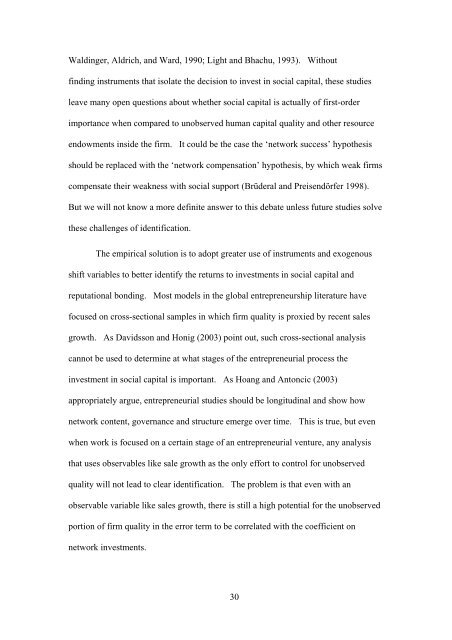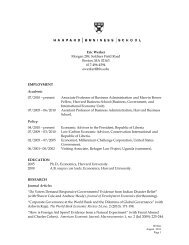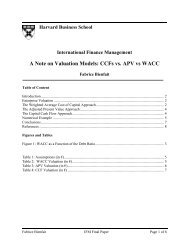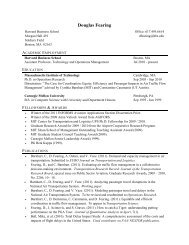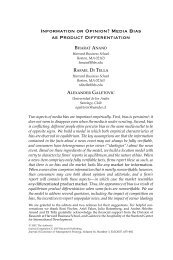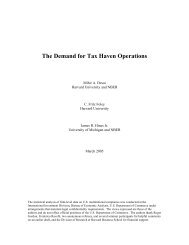Social Dimensions of Entrepreneurship. - People. hbs .edu ...
Social Dimensions of Entrepreneurship. - People. hbs .edu ...
Social Dimensions of Entrepreneurship. - People. hbs .edu ...
Create successful ePaper yourself
Turn your PDF publications into a flip-book with our unique Google optimized e-Paper software.
Waldinger, Aldrich, and Ward, 1990; Light and Bhachu, 1993). Without<br />
finding instruments that isolate the decision to invest in social capital, these studies<br />
leave many open questions about whether social capital is actually <strong>of</strong> first-order<br />
importance when compared to unobserved human capital quality and other resource<br />
endowments inside the firm. It could be the case the ‘network success’ hypothesis<br />
should be replaced with the ‘network compensation’ hypothesis, by which weak firms<br />
compensate their weakness with social support (Brüderal and Preisendörfer 1998).<br />
But we will not know a more definite answer to this debate unless future studies solve<br />
these challenges <strong>of</strong> identification.<br />
The empirical solution is to adopt greater use <strong>of</strong> instruments and exogenous<br />
shift variables to better identify the returns to investments in social capital and<br />
reputational bonding. Most models in the global entrepreneurship literature have<br />
focused on cross-sectional samples in which firm quality is proxied by recent sales<br />
growth. As Davidsson and Honig (2003) point out, such cross-sectional analysis<br />
cannot be used to determine at what stages <strong>of</strong> the entrepreneurial process the<br />
investment in social capital is important. As Hoang and Antoncic (2003)<br />
appropriately argue, entrepreneurial studies should be longitudinal and show how<br />
network content, governance and structure emerge over time. This is true, but even<br />
when work is focused on a certain stage <strong>of</strong> an entrepreneurial venture, any analysis<br />
that uses observables like sale growth as the only effort to control for unobserved<br />
quality will not lead to clear identification. The problem is that even with an<br />
observable variable like sales growth, there is still a high potential for the unobserved<br />
portion <strong>of</strong> firm quality in the error term to be correlated with the coefficient on<br />
network investments.<br />
30


